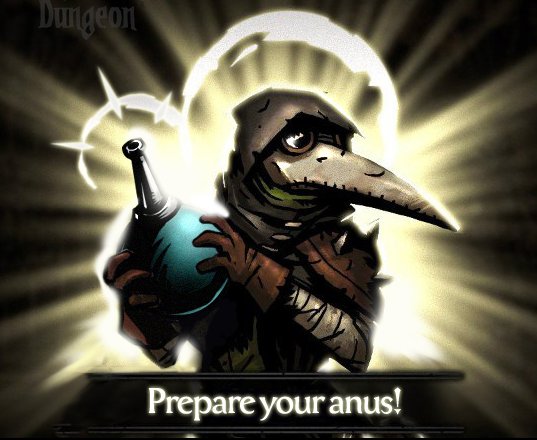

Stress in Darkest Dungeon, like in life, is contagious. Then, when a hero’s stress meter tops out for a second time, they suffer a heart attack, reducing their health bar to 0. As more heroes become afflicted, the stress increase doubles, then triples, then quadruples, as hero after hero falls under the weight of hopelessness. Between the reduced ability to deal with threats and the various ways that an afflicted hero can inflict stress on their friends, it won’t be long before the entire party is in the same boat. The hero’s concerning behavior and inactivity usually means that when one hero hits 100 stress, the rest of the party quickly follows suit. Occasionally they will refuse healing, or even inflict injury on themselves. Often they will become hopeless and morosely inform the party that they are all doomed. Sometimes they will become fearful and hide behind their friends, or not be able to muster the ability to attack. They may shout insults when another hero misses an attack, incurring stress. Just like working with someone who is overstressed can be counterproductive on the job, these heroes become a serious detriment to their adventuring party of four. Reaching the breaking point will bring out the worst in a person heroes so afflicted will gain temporary traits like irrational, sadistic, abusive, or paranoid. Maxing out a hero’s stress is mechanically very similar to real life burnout. As in real life, pushing a person to work too hard can do more harm than good.
Darkest dungeon virtue full#
The player needs to prioritize: is it more important to give this stressed out hero a much needed vacation, or push them a little harder to get them on a mission that they will be perfect for? Is it worth 1500 gold to fund a hero’s rest or hospital trip, when that same gold could go toward a new sword or a backpack full of supplies? While it is often tempting to put off stress management in favor of more material concerns, this is usually a bad call. There are tasks that need to be completed quickly, and not nearly enough resources to make everything happen at once. In Darkest Dungeon, the player takes on the role of a manager. The health bar is transient no matter how injured they were at the end of the last dungeon, a day of rest in town is enough to return a party to full hp. When sitting down to rest by the campfire, buffs that remove stress often come first, with the various combat buffs available being a distant secondary priority.Įven after the adventure is over, stress has a lasting effect. When given the choice between quickly taking out a big damage dealer or a subtle creature that uses spells to stress the party out, a skilled player will usually choose to eliminate the stress threat immediately and take the damage on the chin. While taking a massive amount of damage from a critical hit dangerous in its own right, the stress damage it conveys to the party is the silent killer. While the health bar is the more immediate concern, since the stress bar takes much longer to fill than the health bar does to deplete, Darkest Dungeon players quickly learn that putting off stress management will lead to later disaster.

In this turn based combat game, each hero comes with two meters: the familiar, abstract health bar that can swing back and forth wildly, and a more rigid and difficult to cure stress bar. While nowhere near perfect, Darkest Dungeon’s mechanical examinations of mental health make them much more meaningful to players than any cutscene could hope to accomplish.Ī fundamental aspect of Darkest Dungeon is stress management. Darkest Dungeon is one of the only games that attempts to explore these issues on a level beyond skin-deep. Where many games pay lip service to the idea that exploring, fighting, and killing can have an effect on a person’s mind, it is usually only on a narrative level. Very rarely is there a mechanical implication to stress, loss, and fear, and when there is it is often gimmicky and quickly forgotten. Player characters are usually portrayed as robots, able to sustain endless injuries, fight infinite foes, and experience unending trauma without lasting effect. A character may rant about how much a dead friend is affecting them, but this only as a preamble to their striding into a building full of people and slaying them without a second thought. If touched upon at all, it is in cutscenes. In most games, the stress of combat is simply not explored.


 0 kommentar(er)
0 kommentar(er)
